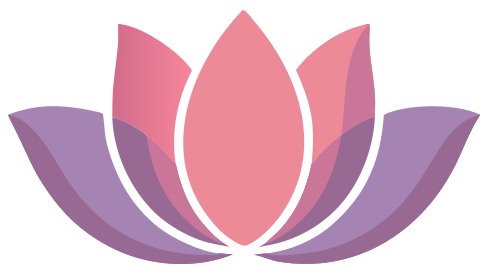“So… is it sexual?”
The question comes up every time I mention tantric massage. Sometimes asked directly, implied with a raised eyebrow, a knowing smile, or an uncomfortable shift in posture.
I understand why they ask. In a culture that barely distinguishes between intimacy, sexuality, and eroticism, where touch below the waist is automatically “sexual” and anything involving the body is either clinical or pornographic, the concept of sacred touch doesn’t compute.
We have no language for it. No cultural framework. No reference point.
But the confusion isn’t accidental. It’s cultural. And it’s something we need to unlearn.
The Binary We’ve Been Taught
Western culture offers us essentially two categories for touch:
Medical/Clinical — Cold, detached, functional. The doctor’s examination. The physical therapist’s adjustment. Touch that heals the body but ignores the person.
Sexual/Erotic — Hot, charged, goal-oriented. Touch that pursues pleasure, release, and conquest. Touch that uses the body for gratification.
And that’s it. Those are the options.
So when someone hears about tantric massage, touch that includes the whole body, that honours intimate areas, that invites deep feeling, the mind immediately categorises it: “Ah, so it’s sexual.”
Because what else could it be? We don’t have a third category. We don’t have words for touch that is intimate without being sexual, sacred without being clinical, healing without being detached.
But tantra asks us to imagine something else entirely.
What Sexual Touch Is
Let’s be clear about what we mean by sexual touch, because the confusion starts here.
Sexual touch is touch that pursues a specific outcome. It builds arousal toward climax. It seeks release, pleasure, gratification. It’s goal-oriented, there’s somewhere you’re trying to get to, something you’re trying to make happen.
There’s nothing wrong with this. Sexual touch is beautiful, natural, human. It’s connection, intimacy, joy. But it operates within a specific framework: desire, pursuit, satisfaction, completion.
The focus is on sensation for its own sake. On pleasure as the destination. On the physical body as the site of gratification.
This is sexuality. And it has its place.
But it’s not the only way to touch or be touched. And conflating all intimate touch with sexual touch is what creates the confusion around tantric practice.
What Sacred Touch Is
Sacred touch operates from an entirely different intention.
It’s not pursuing anything. It’s not building toward climax or seeking release. It’s not using the body for gratification or trying to “make something happen.”
Sacred touch is presence meeting presence. Consciousness touching consciousness through the medium of the body.
It honours the whole person, not just the physical body, but the emotional, energetic, and spiritual dimensions. It creates a container where someone can feel safe enough to drop their armour, to soften, to allow whatever needs to arise.
The intention isn’t to create pleasure (though pleasure often arises). The intention is to create space. To witness. To hold. To allow the body to speak, to release, to heal, to awaken.
Sacred touch can include areas we associate with sexuality, the chest, the belly, the pelvis, and the inner thighs. Not because these areas are “erotic targets,” but because they’re often the most armoured, the most numb, the most in need of conscious presence and healing.
The question isn’t “What body parts are touched?” The question is “What is the quality of presence brought to the touch?”
The Intention Changes Everything
Here’s what makes the difference between sexual and sacred:
Imagine two people. Same room. Same body. Same areas being touched.
In one scenario, the touch is sexual. There’s an agenda. An arousal is being built. A goal is being pursued. The giver wants something from the receiver: response, validation, reciprocation, or release. The energy is pursuing, grasping, building toward something.
In another scenario, the touch is sacred. There’s no agenda. No goal. No expectation of response. The giver offers presence without wanting anything in return. The touch is slow, conscious, reverent. The energy is open, spacious, allowing whatever arises to arise.
Same touch. Completely different experience.
This is why tantric massage can include touch of intimate areas without being sexual. Because the intention isn’t sexual. The quality of consciousness isn’t sexual. The container isn’t sexual.
The body knows the difference. Even if the mind is confused, even if our cultural conditioning tries to label it one way or the other, the nervous system can feel the distinction between being pursued and being held, between being used and being witnessed, between performance and presence.
Why the Confusion Hurts Us
When we collapse sacred and sexual into one category, we lose something essential.
We lose the possibility of intimacy without an agenda. Of being touched without having to perform. Of feeling without having to produce a response. Of being witnessed in our vulnerability without it becoming sexual currency.
We also reinforce the idea that certain parts of our bodies are inherently “sexual” and therefore either shameful or exclusively reserved for erotic contexts. The chest becomes only about arousal. The pelvis becomes only about sex. And vast territories of sensation, healing, and aliveness become inaccessible because we’ve labelled them off-limits.
This is especially damaging for people who’ve experienced sexual trauma. If all intimate touch is sexual, then healing from sexual wounding becomes nearly impossible. There’s no safe container. No way to reclaim the body without triggering the same dynamics that caused harm in the first place.
But sacred touch offers another way. A way to be touched intimately without it being sexual. A way to feel without performing. A way to reclaim parts of the body that have been numb, armoured, or violated, not through sexuality, but through conscious, compassionate presence.
The Role of Arousal
Here’s where it gets nuanced: arousal can arise during sacred touch. Energy moves. The body responds. Sensation intensifies. Sometimes there’s heat, tingling, even waves of pleasure that feel sexual.
Does that make it sexual? No.
Arousal is energy. What you do with that energy determines whether the experience is sexual or sacred.
In sexual touch, arousal is pursued, amplified, and directed toward climax. The goal is to build it, ride it, and release it.
In sacred touch, arousal is witnessed, allowed, and circulated. It’s not pushed away or suppressed, but it’s also not chased or grasped. It’s simply energy moving through the body, opening channels, awakening sensation, and dissolving numbness.
Sometimes that energy peaks and subsides on its own. Sometimes it transforms into emotion, tears, laughter, or release. Sometimes it spreads throughout the body, becoming a full-body aliveness rather than a concentrated genital sensation.
The difference isn’t in whether arousal occurs. The difference is in the relationship to it. In sexual touch, arousal is the point. In sacred touch, it’s one possible experience among many, not more important than peace, or tears, or simply breathing with presence.
What Tantric Massage Actually Is
So let’s be explicit: tantric massage is not a euphemism for sexual service. It’s not foreplay. It’s not a way to get pleasure under the guise of spirituality.
It’s a practice of conscious, reverent touch designed to awaken the body, move energy, and create a safe container for whatever needs to emerge, healing, release, pleasure, emotion, or simply profound rest.
The person receiving doesn’t need to perform, respond, or reciprocate. They don’t need to “do” anything. They’re invited to simply feel, breathe, and be present with whatever arises.
The person giving isn’t pursuing arousal or gratification. They’re offering presence, creating safety, holding space. Their energy isn’t grasping or wanting; it’s open, steady, witnessing.
Boundaries are clear and respected. Consent is ongoing. The intention is transparent. And the container is designed not for sexual gratification, but for embodied awakening.
This is sacred touch. And it’s radically different from what most people have experienced.
Unlearning the Confusion
If you’ve spent your whole life in a culture that only understands two kinds of touch, clinical or sexual, then sacred touch won’t make sense at first. Your mind will try to categorise it, to fit it into familiar boxes.
But unlearning the confusion is part of the practice. It requires:
Recognising that intimacy and sexuality aren’t the same thing. You can be deeply intimate with someone, vulnerable, seen, open, without it being sexual.
Understanding that certain body parts aren’t inherently sexual. They’re parts of your body that hold sensation, emotion, energy, and yes, sometimes arousal. But that doesn’t make all touch to those areas sexual.
Feeling into the quality of presence rather than focusing on the mechanics. The same touch can be sexual or sacred depending on the intention, the consciousness, and the container.
Allowing yourself to receive without performing. To feel without needing to produce a response. To be touched without it leading anywhere or meaning anything beyond the present moment.
This unlearning takes time. It requires experiencing the difference, not just understanding it intellectually. But once you feel it—once you experience touch that is intimate, powerful, and transformative without being sexual, you’ll understand what sacred means.
The Invitation
Most of us have never been touched this way. With full presence, deep reverence, and no agenda. With consciousness that honours the whole of who we are, not just what our bodies can provide.
We’ve been touched sexually. We’ve been touched clinically. But sacred touch? That remains largely unknown.
And yet it’s what many of us are longing for without knowing how to name it. To be seen fully. To be held without expectation. To feel deeply without having to perform or produce or give anything back. To reclaim our bodies as sacred rather than shameful or purely functional.
This is what tantra offers. Not better sex. Not exotic techniques. But a return to the sacred.
Remembering that your body isn’t just a vehicle for pleasure or a problem to be fixed. It’s a temple. A threshold. A living, breathing expression of consciousness itself.
And when it’s touched with that awareness, everything changes.
Sacred and sexual aren’t opposites. They’re different dimensions. Sexuality celebrates the body as pleasure. The sacred honours the body as holy. And in a culture that has forgotten the sacred, reclaiming it isn’t about rejecting sexuality, it’s about expanding beyond it into something we barely have words for. Something that asks us to feel more, not less. To be more present, not more stimulated. To remember that intimacy can be profound without being sexual, and that the deepest touch doesn’t pursue, it simply witnesses and allows.
Namaste
—
Image by Olga Volkovitskaia



